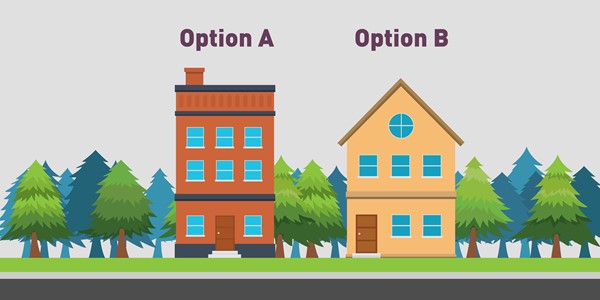
First-time homebuyers often gravitate to newly-built homes, and for good reason. In a new build, the buyer often gets to choose finishes, fixtures, and flooring. Newer homes have higher energy-efficiency standards and meet up-to-date codes. Most of all, no one else lived there before you. It’s all virgin territory.
Advantages of new builds
Some new builds offer even more customization, letting the buyer participate in design choices, make minor layout changes, and upgrades to appliances, faucets, backsplashes, and lighting.
Another advantage to a newly built home is that no one else has lived in it. This may be especially important to those with pet allergies or other sensitivities. You already know that no dog or cat dander is hiding in the ducts or illness-triggering spice lurks in the range hood.
Often, new homes come with warranties—ranging as high as ten years— providing protection for expensive appliances such as air-conditioning and heating units, water heaters and spa tubs.
Some disadvantages
With all there is to love in a new build, there are a few disadvantages to consider when making your choice.
- Ongoing construction: if you’re an early buyer in a new development, expect an impact from dust and noise from other homes under construction. Be aware of debris and hazards on new streets from dropped roofing nails to spilled gravel and traffic slowdowns from construction trucks and trailers delivering building supplies and equipment.
- Fewer neighbors: in a newly developed neighborhood, you might not have neighbors for a while.
- Limited services: when a whole area is under development, you may need to drive farther to shop, find fuel, or get to basic services like urgent care facilities.
- Increased assessments: some communities have extra assessments and taxes on developing neighborhoods to repay the city for water and sewer lines, streets and street lights and other city services.
- Limited landscaping and greenspace: while under development, common-area landscaping, parks, and playgrounds may need to wait for completion of infrastructure, streets, and other necessities. Many new developments have no mature trees or other advanced greenery, so the “feel” is completely different from a mature neighborhood.
- Schools and libraries may be farther: until the new development needs its own school, the nearest school may be some distance away.
- Lifestyle limits: restaurants, nightlife, and cultural events may be more difficult to get to.
Before deciding if a new home works for you, talk to your real estate professional about all your options.
About the Author
